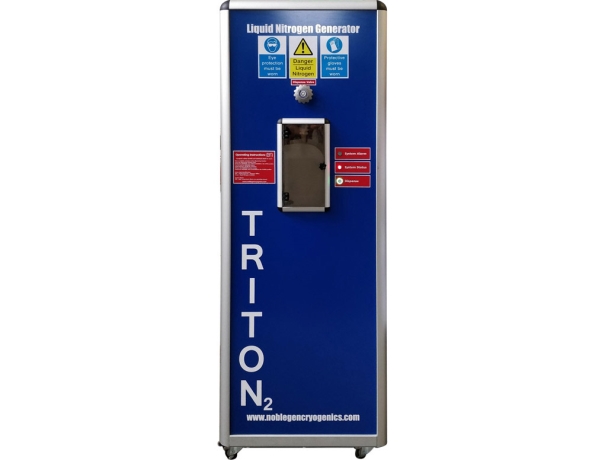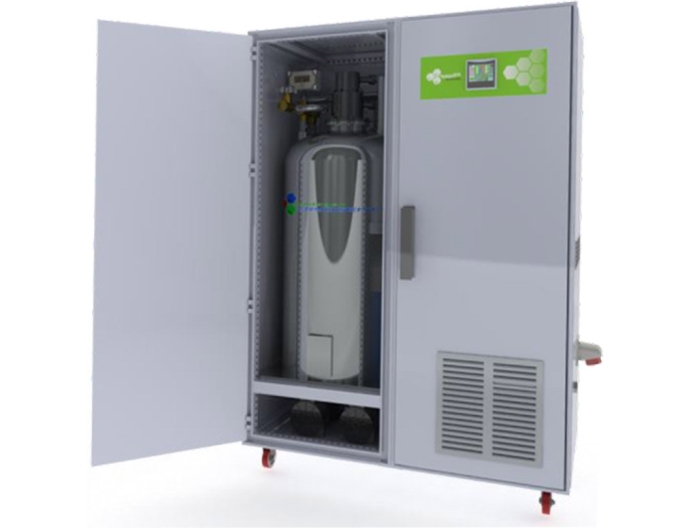Nitrogen is an element that can be in a liquid state of matter and gas. Nitrogen is obtained from atmospheric air. Nitrogen is a fairly common chemical element. The Earth's atmosphere is 75% nitrogen, but in its pure form it is not suitable for human breathing. Nevertheless, hundreds of processes take place in the human body whose speed and quality are affected by this substance. For example, nitrogen is part of hemoglobin, amino acids and proteins. In addition, it is found in the cells of plants and animals.
Under normal conditions, nitrogen is an odorless, colorless gas that is poorly soluble in water. When heated, nitrogen acquires the ability to dissociate into atoms and form various chemical compounds. Its reaction with hydrogen is highly sought after from which ammonia is obtained which is used for the production of fertilizers, refrigerators, synthetic fibers, etc. Nitrogen gas is fireproof and explosive and it also prevents decay and oxidation. The substance is non-toxic and therefore has no dangerous effect on the environment
Principle of operation of Liquid Nitrogen Generator
Nitrogen when cooled to 195.8 degrees Celsius, it becomes a liquid that resembles ordinary water in appearance. The boiling point of this substance is slightly lower than that of oxygen. Therefore, when air is heated, the nitrogen begins to evaporate first. This procedure underlies the modern principle of chemical product manufacturing. Multiple repetition of fluidity and boiling makes it possible to obtain nitrogen and oxygen at the desired concentration.
Uses of Liquid Nitrogen Generators
Therefore, the use of nitrogen is very common nowadays. And the use of a liquid nitrogen generator gives the most efficient, accurate and high-quality solution for a wide range of industries such as: Gas, food, metallurgy, electronics, etc. However, large-scale nitrogen production is particularly relevant to the petrochemical industry. The main field of application is the production of acid of the same name and other fertilizers for agriculture.
In engineering, nitrogen is used to cool various equipment and units. In the food industry, liquid nitrogen is used as a cooling and freezing element. In electronics it prevents oxidation during semiconductor production.
In medicine, nitrogen is used to transport chemical raw materials, package medicines, preserve cells and organs. In addition, the use of liquid nitrogen for the treatment of damaged skin tissues such as warts, condyloma, etc. is very common.
The advantage s of liquid nitrogen generators:
- Quick start and stop.
- Possibility of remote control.
- High separation capacity.
- Low power consumption.
- Option to operate in automatic mode.
- Low maintenance costs.
Click here for the Liquid Nitrogen Generators category

Types
1.LN2 GENERATOR 65L/DAY AIR COOLED
• Liquid nitrogen production (l/hr): 2.7
• Liquid nitrogen purity: >99% (<1.0% O2)
• Liquid nitrogen tank volume (litres): 210
• Liquid nitrogen pressure pressure (bar g): Up to 4.0

2.
LN2 GENERATOR 130L/DAY
Liquid nitrogen production (l/hr): *5.42
*Increased tank pressure and production when BOOST mode activated
Liquid nitrogen purity: >99% (<1.0% O2)
Liquid nitrogen tank volume (litres): 300
Liquid nitrogen Pressure (bar g): Up to 4.0

3.
LN2 GENERATOR 10L/DAY
 Utilising the lowest powered cooling system to make
Utilising the lowest powered cooling system to make
TRITON2 the most efficient small 10l/day LN2 production
system available.
Specifications
Liquid nitrogen production (l/hr) 0.42
Liquid nitrogen purity >99% (<1.0% O2)
Liquid nitrogen tank volume (litres) 20
